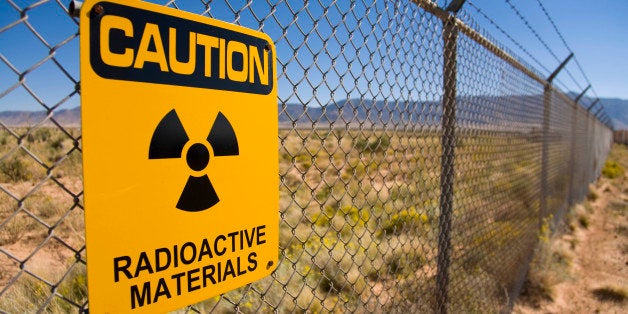
By all accounts, Deputy Secretary of Defense Ashton Carter is a smart man: Yale graduate, Rhodes scholar, doctorate in theoretical physics, teaching stints at the JFK School of Government and MIT, and two rounds of service at the Department of Defense, one in the Clinton years and now in the Obama administration. But even the smartest guy in the room gets it wrong once in a while, and such was the case at this year's Aspen Security Forum. When asked by New York Times chief Washington correspondent David Sanger whether it might not "save you considerably" to cut U.S. nuclear forces by one-third, Carter responded by saying that nuclear weapons are not "a big swinger of the budget" because "they don't cost that much."
As the late Everett Dirksen was alleged to have said, a billion dollars here, a billion dollars there, and pretty soon you're talking real money. And even by Washington standards, the nation is spending real money on nuclear weapons -- money that would be better used for virtually any other purpose at a time of tight budgets and shifting national security priorities. The high cost of nukes should motivate us to do what we should be doing anyway -- getting rid of weapons that serve no useful purpose and do far more harm than good to U.S. and global security. Reasonable people can disagree about how to get there, but President Obama was right when he said we need to work towards a world free of nuclear weapons.
This brings us back to Carter's response at Aspen. His low-balling of the costs of nuclear weapons came in the context of a prior question in which David Sanger asked if we wouldn't be just as safe going down to about 1,000 deployed nuclear warheads from the 1,550 allowed under New START. This would be a cut of about one-third that would still leave the United States with devastating nuclear overkill. And since we'd be just as safe at this lower number, Sanger asked why we shouldn't just do so unilaterally and "save considerably" in the process.
Carter made more than one error in his response to Sanger's two-pronged question. First, he suggested that since "we aren't going to attack ourselves" with our own nuclear weapons, why get rid of them? Why not trade reductions in the U.S. force for reductions or increased nuclear safety measures on the part of other nations? This is Cold War thinking at its worst, and ignores the fact that U.S. reductions may be positive in their own right, serving as a spur to others to cut their own nuclear arsenals. These reductions would also be a step towards meeting U.S. obligations under the Nuclear Non-Proliferation Treaty (NPT), which calls for nuclear weapons states to eliminate their nuclear weapons in exchange for non-nuclear states agreeing not to develop them.
In short, Carter vastly overstates the strategic value of nuclear weapons while drastically understating their budgetary costs.
The cost question is worth looking it in more detail. At Aspen, Carter claimed that the U.S. spends "only" $16 billion a year on nuclear weapons (by the way, only at the Pentagon is $16 billion considered pocket change). In coming up with his figure, Carter appears to be understating or ignoring large categories of expenditure, including the ballooning projects designed to build new nuclear warheads, bomb factories, submarines, bombers and inter-continental ballistic missiles (ICBMs). Each one of these projects is likely to cost in the tens of billions of dollars. One nuclear warhead project alone -- the B-61 bomb -- costs more than its weight in gold, at $10 billion and counting. Current plans also call for spending $55 billion or more on 100 new nuclear bombers, roughly $100 billion on new ballistic missile submarines, and untold billions more on bomb-making facilities like the planned Uranium Processing Facility (UPF).
But the aforementioned projects are long-term efforts, which will be paid for over time by ourselves, our children and, in some cases, our grandchildren. An apples-to-apples comparison can be had by looking at two independent analyses: a 2008 report by Stephen Schwartz and Deepti Choubey for the Carnegie Endowment for International Peace and a 2012 analysis by Russell Rumbaugh and Nathan Cohn for the Stimson Center, which represent the most comprehensive current estimates of direct nuclear weapons spending.
The Carnegie report, which builds on the methodology of the path-breaking 1998 study, the Atomic Audit, documented over $29 billion in nuclear weapons spending, including procurement, operations, research and development costs, nuclear weapons-related intelligence spending, and the nuclear warhead complex. The Stimson Center's more recent estimate covers similar ground and pegs annual nuclear weapons spending at about $31 billion per year, or about twice the amount Carter cited at Aspen.
In addition to the Stimson tally, the Ploughshares fund has done a comprehensive estimate that includes nuclear-related activities like cleanup costs at nuclear weapons facilities and ballistic missile defense. The Ploughshares estimate comes in at well over $60 billion per year, or about four times Carter's estimate.
Clearly Dr. Carter needs to think again. Sharp reductions in nuclear weapons will make us safer while saving tens of billions of dollars in the next decade and beyond. That should be a no-brainer, particularly for someone with his intellectual credentials.
